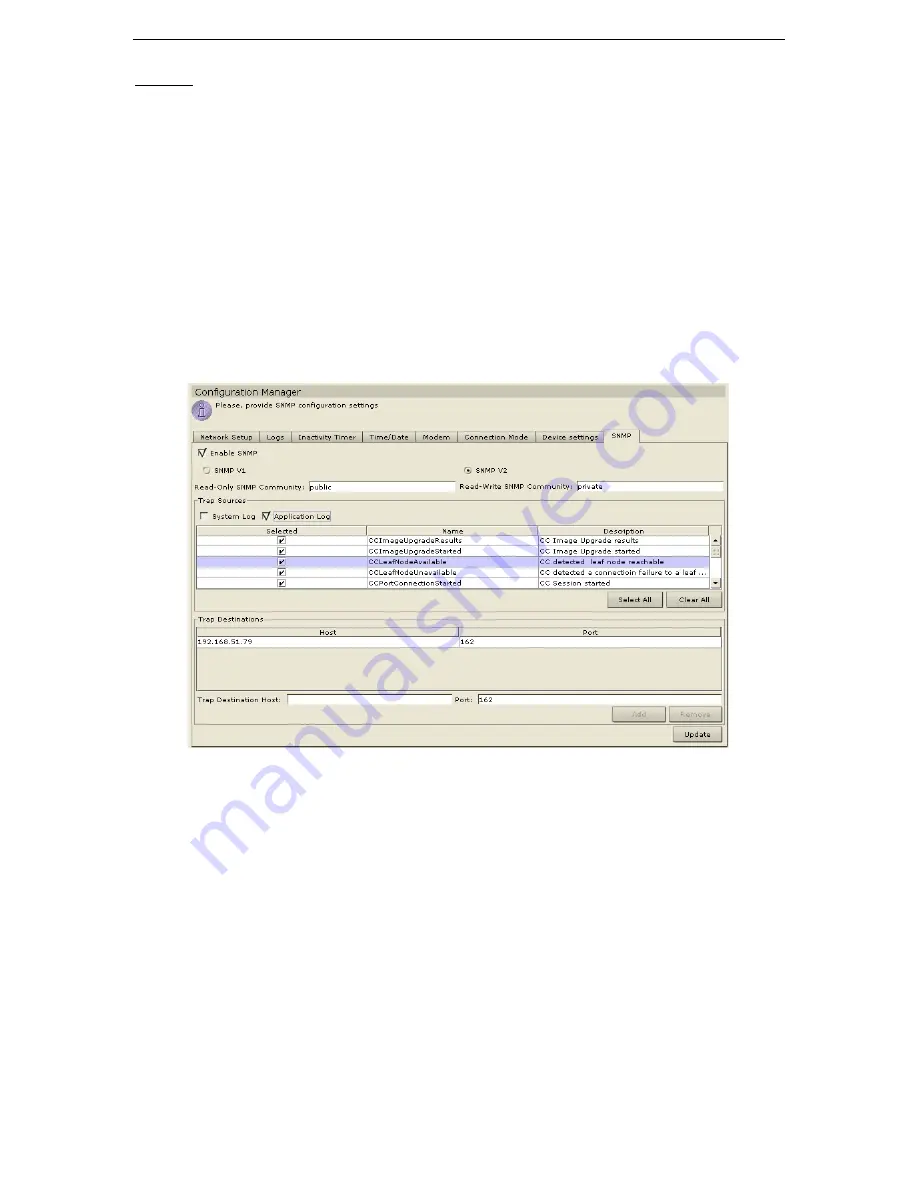
C
HAPTER
5:
A
DMINISTRATION
T
OOLS
97
SNMP
Simple Network Management Protocol allows CommandCenter to push SNMP traps (event notifications)
to an existing SNMP manager on the network. Only a CommandCenter Administrator trained in handling
an SNMP infrastructure should configure CommandCenter to work with SNMP.
Setting up for SNMP
Because CommandCenter pushes its own set of Raritan traps, you must update all SNMP managers with a
custom MIB file that contains Raritan trap definitions. This custom MIB file can be found on the CD
included with your CommandCenter unit.
Configuring SNMP in CommandCenter
1.
On the
Setup
menu, click
Configuration Manager.
When the
Configuration Manager
screen
appears, click on the
SNMP
tab.
Figure 130 Configuration Settings Device Settings Screen
2.
Check the box marked
Enable SNMP
to enable the SNMP feature of CommandCenter.
3.
Click on the radio button before
SNMP V1
or
SNMP V2
, depending on which protocol your SNMP
managers use.
4.
The
Read-Only Community
and
Read-Write Community
will populate automatically depending on
your SNMP V1 or V2 selection.
5.
Check the box(es) before the trap(s) you want CommandCenter to push to your SNMP managers:
Under
Trap Sources
, there is a list of SNMP traps grouped into two different categories:
System Log
traps, which include notifications for the status of the CC unit itself, such as a hard disk failure, and
Application Log
traps for notifications generated by events in the CC application, such as
modifications to a user account. To enable traps by type, check the boxes marked
System Log
and
Application Log.
Individual traps can be enabled or disabled by checking their corresponding
checkboxes Use
Select All
and
Clear All
to enable all traps or clear all checkboxes.
6.
Type the
Host
IP address and
Port
number used by SNMP managers in the
Trap Destination
panel.
Summary of Contents for COMMANDCENTER 2.20 -
Page 2: ......
Page 4: ...This page intentionally left blank...
Page 12: ......
Page 16: ...4 COMMANDCENTER USER GUIDE...
Page 22: ...10 COMMANDCENTER USER GUIDE...
Page 138: ...126 COMMANDCENTER USER GUIDE...
Page 140: ...128 COMMANDCENTER USER GUIDE...
Page 144: ...132 COMMANDCENTER USER GUIDE...






























